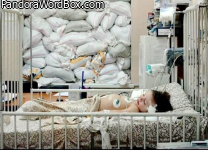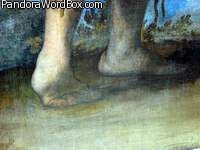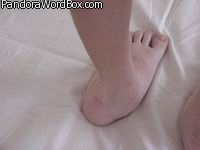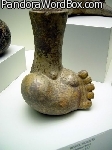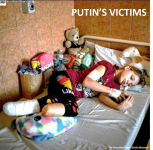Our websites offer information mostly for educational purposes with no intent to alter health care protocols nor to serve as a sole source of medical information.
Always seek the advice of your local health care provider.
|
× UKRAINIAN CHILDREN WITH DISABILITIES HAVE SPECIAL NEEDS |
VARUS VALGUS
CLUBFOOT TALIPES PIEBOT
PES EQUINUS - PLANUS - CAVUS CALCANEUS
HALLUX VALGUS - BUNION
Feet, hands, digits and limbs in general, reflect the mechanical forces shaping their morphology. Often limbs may become "deviated" from the "normal" axis and cause correctable, thus preventable but potentially serious disabilities. Note that many "hip transplants" needed by mature patients reflect missed or undetectable mild forms of "hip dysplasia" (abnormal morphology or shape of the joint (articulation) of the thigh (femur) - hip (iliac) bones. This example is one of many illustrating a vast array of "varus" and "valgus" alterations, a subject of several companion overviews. Here the focus in on ideas flowing from VALGUS and VARUS, a topic that is often confusing to students of this subject.TALUS refers to the ankle and PES to the foot. EQUINUS, PLANUS, CAVUS add nuances to descriptions of hands and feet resembling a hoof, being flat or excessively concave or convex ("rocker bottom foot"). The above terms, in combination with VARUS, VARA and VALGUS are used to describe a variety of limbs, hands and feet twisted and deviated as a result of malformations and deformations clinically grouped under the vulgar label "club".
In a CAUDAD (toward the cauda or tail) direction, the most common "deviations" are VALGA and VARA anomalies of the elbow, hand, hip, knee, foot, digits (fingers and toes) and the great toe or hallux (note how many persons, women in particular have "BUNIONS". In general terms, note that varus-valgus denote deviations from a midline, either from the body axis or from that of the limb (this nuance is rather important to keep in mind). VALGUS implies "toward" in contrast to VARUS which implies "away". A great toe or Hallux may point toward the body midline thus point away from the limb axis - in medical parlance, the choice favors the term Hallux Valgus which implies that its tip points "toward" the midline of the leg and "away" from the midline of the body.
TALIPES or ASTRAGALUS refers to the ANKLE bone which supports and transfers the entire body weight on the rest of the PES or foot. The meaning of TALIPES is often reduced to denote CLUB FOOT CLUBFOOT or in French PIEBOT or stump like foot. TALIPES is not, for the most part, a malformation but represents a deformation due to constrained foot movements during prenatal life. Formerly, talipes was a cause of serious and lifelong disabilities that currently often can be effectively corrected by early interventions.
Clinical descriptions of foot deformities often underscore the the weight baring point of the PES as in: TALIPES CALCANEUS (walking on the heal or calcaneus); TALIPES EQUINUS (walking on toes tips); TALIPES VALGUS (standing on the inner edge of the sole of an everted foot) TALIPES VARUS (as above but on the outer sole edge or inverted foot); PES EQUINUS (or TALIPES EQUINUS); PES EQUINOVARUS akin to TALIPES VARUS); PES PLANUS ("flat foot" or flat arch); PES CAVUS (high foot arch).
HALLUX refers to the great toe and HALLUX VALGUS, in vulgar terms is a BUNION which for the most part is an acquired anomaly caused by wearing deforming shoes. BUNION describes a swelling as in BUN, BUNNY, BULLE, BOLLA, BALL or BEIGNET and the pain burning as if caused by pouring juice of an ONION or OIGNONS in French on an open wound.
The elbow articulation linking the arm with the forearm forms a mild outward "wrists away" angle or CUBITUS VALGUS refered to as the "carying angle". This angle insures that swinging wrists will clear the bulge of the hips. Mature women who have greater hip prominences correspondingly have greater "carrying angles". An exaggerated cubitus valgus, particularly in men, may be sign of abnormalities of the X sex chromosome or a signal of an abnormal sexual development.
Regarding the hand, TALIPOMANUS implies that the hand is "club" or "truncated". Such malformations are often associated with other anomalies and call for an extensive clinical assessment.
In Latin, COXA refers to a functional unit inclusive of the hip and thigh. The hip joint articulates the femur or thigh bone with the iliac or hip bone. It is the angle of the neck and the body of the femur that determines the axis of the thigh and therefore the position of the distant knee or GENU. Therefore, deviations of the COXA and GENU are kindred abanomalies as in; COXA VARA or ADDUCTA (axis of the femur "inward") akin to genu valgum or valga) GENU VALGA ("knock knees" as if ><) COXA VALGA or ABDUCTA (axis of the femur "away") akin to genu vara GENU VARA (knees apart as if <> ) or in vernacular BOWED LEGS which if bilateral may represent a autosomal dominant trait. Note that VARUS in Latin denoted bowed legs, once a common sign of rickets or lack of Vitamin D (see tibia vara) and GENU RECURVATUM (knees that bent backwards). TIBIA VARA refers to a distal "inward" deviation of the tibial end or the ankle joint. If unilateral, it is often a sign of Blount Osteochoncrosis Deformans Tibiae, a disorder of the tibial proximal epiphyseal plate which may collapse and impact the knee articulation plus induce a deviation of the distal leg "inward" from the normal axis.
Further CAUDAD or peripheraly, other notable deformities are those of the ankle or TALIPES, foot or PES and toes, in particular the HALLUX (great toe). Note that being most peripheral renders the ankle and foot most vulnerable to become compressed during prenatal life. If so, immobilization of any articulation or joint induces deformities and stiffness. Because the high frequency and significance of foot deformities, we have dedicated to the subject a separate overview.
Another domain concerns the CUBITUS or ulna, the bone of the forearm upon which the Romans reclined during their lavish dinner parties. Now deCUBITUS refers to ulcers and other complications induced by chronic reclining of those who are bedridden.
20101201, 20150408 ww



